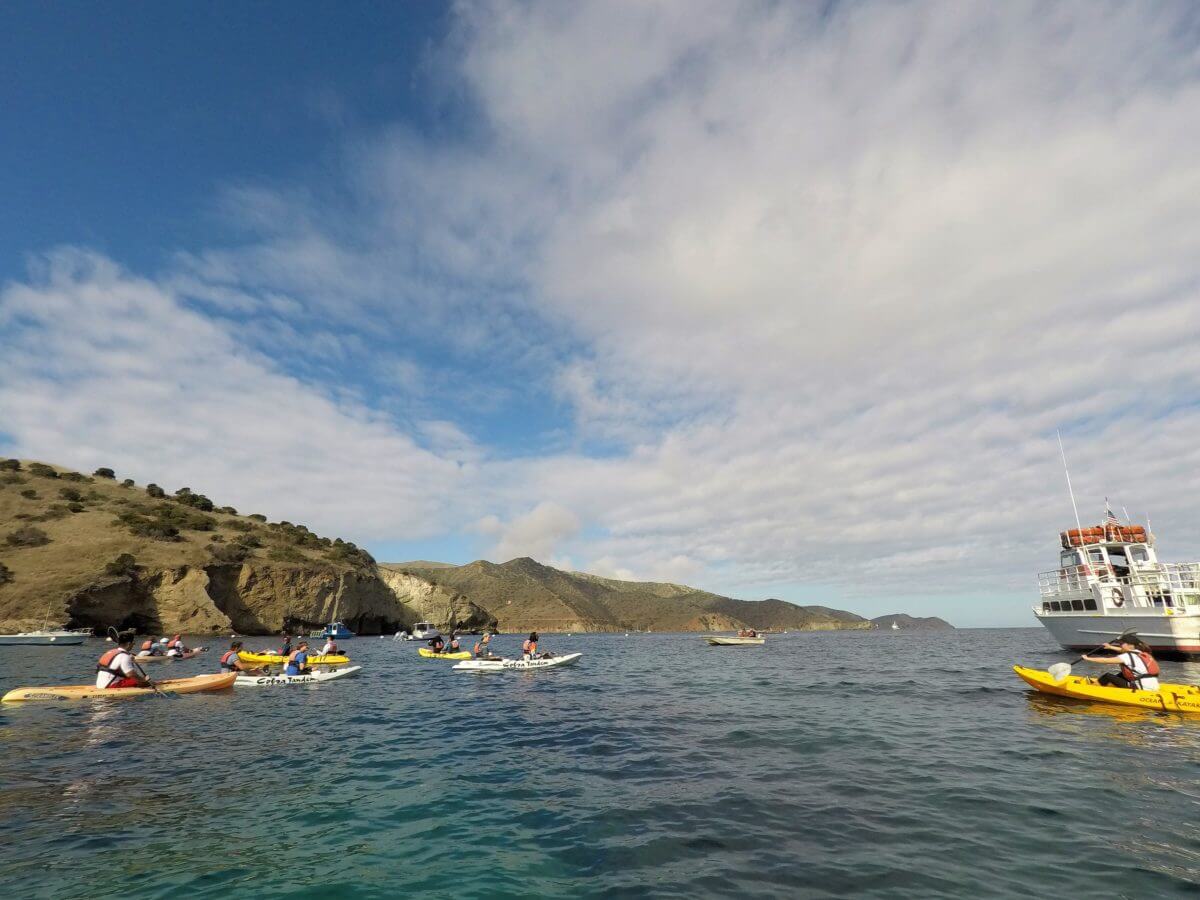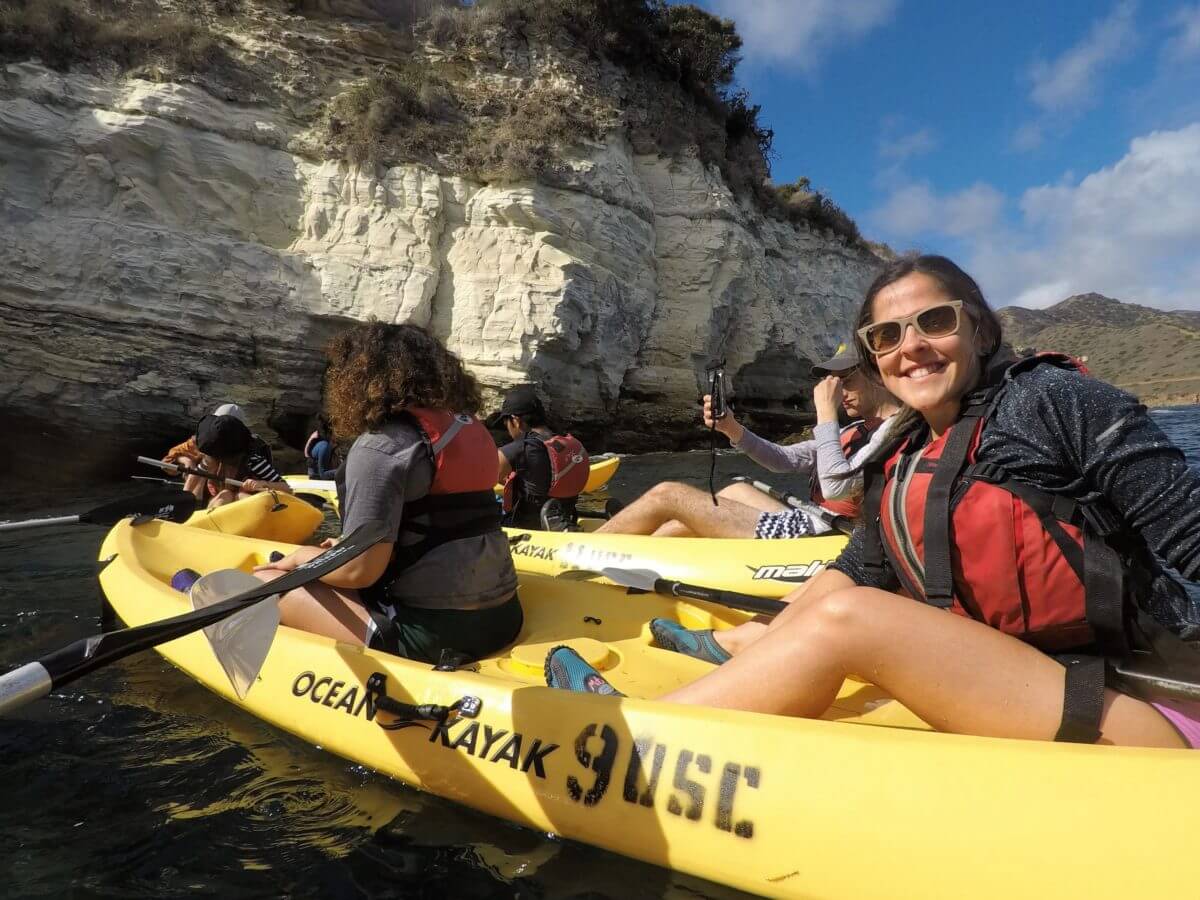Catalina island is fairly small in size measuring only 22 miles long and 8 miles at its greatest width. It is estimated that less than 5,000 people live on the island, 90 percent of whom live in the main town of Avalon. Beginning in the 1920s, the island has been developed into a tourist destination by chewing gum magnate William Wrigley Jr. Over one million people visit Catalina every year and it is very popular for those that enjoy water sports. You can notice scuba divers, kayakers, snorkelers and paddle boarders.

Our third day in the island started with an incredibly fun kayak tour on Catalina’s clear ocean waters. We all met in the waterfront after breakfast for a brief training orientation and to get our kayaks, paddles and personal flotation devices. Then we had a pre kayak warm up sesh and paddle practice, and we split into teams of two to get into our stable double sit-on-top kayaks. The weather was perfect! We enjoyed the sun while exploring the beautiful coastline of the Catalina Island by kayak and learning about its natural history.

Once on the water, our guide Lorraine Sadler, pointed out interesting birds, plants, and landmarks, such as the White Rock Island, nicknamed Bird Rock, lying approximately 500 meters offshore of the USC Wrigley Marine Science Center. As we got close to the rock, we could see a lot of birds resting on it and some flying over our kayaks on their way towards Bird Rock. We were surrounded by nothing but stunning blue water, cliffs and natural rocks. On our way back to the mainland, Lorraine also discussed the island’s geology and ecology as we glided over nearshore kelp forests above colorful fish. Although I grew up in a coastal city, it was my first time kayaking on the open sea and it was a very fulfilling experience.

In the early afternoon, the kitchen chef did a demo at the food dehydrating/compost machine, Eco-250, which is an on-site food and organic waste reduction technology. Fruits with soft skin, vegetables, cooked meat, chicken and fish can be added to the machine through a top door. This food dehydrator is capable of processing 250 pounds of food waste per cycle. The temperature in the unit can reach about 180 degrees F to heat up the food waste and ensure that the end product is essentially odor free. The cooking process lasts approximately 14 hours. After that, a lower discharge is opened to release the end product (“dry discharge”) which looks like soil. The water (condensate) is removed from the system through a drain line and it has been stored in plastic water bottles because its potential use to water plants has not been tested yet.
Then, some of us met at the USC Catalina Hyperbaric Chamber to learn about this emergency medical facility on the island for the treatment of scuba diving accidents. At night, we went on an amazing snorkel tour and had the privilege to check out some incredible creatures we do not see during the day, which I am going to write about in my next blog!
Published on July 3rd, 2018Last updated on April 1st, 2021

